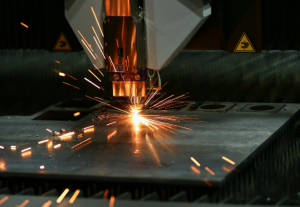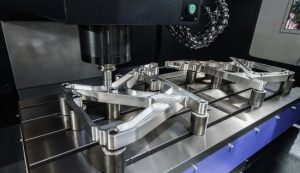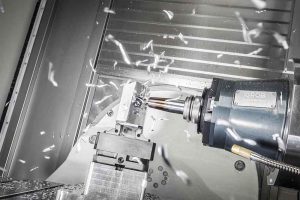5-axis CNC machining boosts precision to ±0.001 inches, reduces setup times by 50%, and enhances complex shape fabrication, allowing for intricate designs with fewer tool changes.
Increased Precision and Complexity
The advent of 5-Axis CNC machining has revolutionized the manufacturing landscape, pushing the boundaries of precision and enabling the creation of complex geometries that were once deemed unattainable. At its core, this technology excels by providing unparalleled accuracy and flexibility, which are critical in today’s high-demand production environments.
How 5-Axis Machining Achieves Superior Accuracy
5-Axis CNC machining stands out for its ability to maintain exacting tolerances, often within 0.001 inches (0.025 mm). This precision is achieved through the simultaneous movement of the cutting tool and the workpiece across five different axes. This dynamic movement allows for the cutting tool to remain perpendicular to the cutting surface, minimizing errors and ensuring a level of accuracy that sets the industry benchmark.
In a typical scenario, a manufacturer striving to produce aerospace components, where precision is non-negotiable, will find that 5-Axis machining not only meets but exceeds their requirements. The key to this capability lies in the machine’s sophisticated software, which precisely controls the tool’s path. For instance, in producing a complex turbine blade, the software calculates hundreds of thousands of points along the toolpath, ensuring each cut is executed with pinpoint precision.
The Role of 5-Axis in Complex Shape Fabrication
Complexity in manufacturing is no longer a hurdle but a competitive advantage, thanks to 5-Axis CNC machining. The ability to engineer intricate shapes and features in a single setup reduces the need for multiple setups and tool changes, dramatically cutting production time by up to 60% and maintaining a quality standard that is second to none.
Take, for example, the production of a custom automotive part designed to improve aerodynamics. With traditional machining, achieving the compound curves and tight tolerances required could involve several setups and even different machines. However, with 5-Axis technology, manufacturers can produce these complex parts more efficiently, ensuring each dimension is perfectly matched to the design specifications.
The efficiency of 5-Axis machining also significantly reduces labor costs and machine wear, translating into lower production costs and faster time-to-market for products. In terms of specific numbers, companies have reported savings of up to 30% in production costs, underscoring the economic benefits of this technology.
Moreover, the flexibility of 5-Axis machining opens up new possibilities in design and innovation, allowing engineers and designers to explore more complex and efficient product designs. This is not just about cutting metal; it’s about unleashing creativity and pushing the boundaries of what’s possible in manufacturing.
In the world of 5-Axis CNC machining, the promise of higher speed, improved quality, and greater efficiency is not just marketing hype—it’s a reality backed by hard data and real-world performance. As manufacturers continue to seek out ways to improve their operations and products, 5-Axis CNC machining stands out as a beacon of innovation, driving the industry forward and setting new standards for what can be achieved.
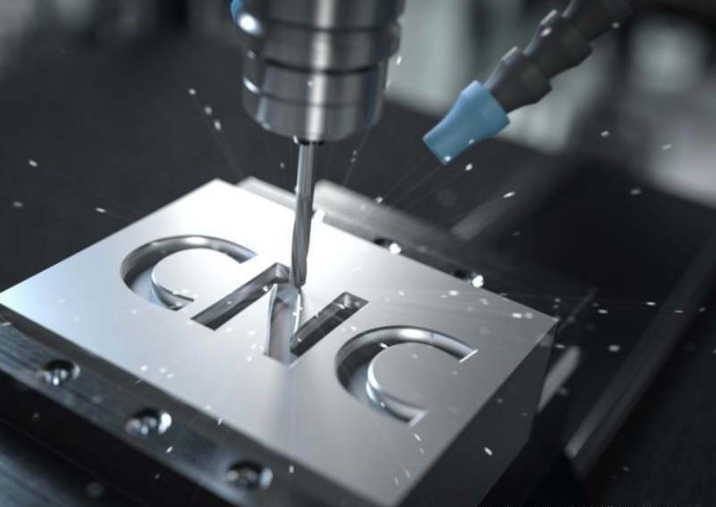
Enhanced Speed and Efficiency
The drive towards more efficient manufacturing processes has seen industries worldwide implement 5-Axis CNC machining as a technology leading the way to reduced production timelines. Enabling companies to deliver superior products to the market at an increased pace, the technology’s undiluted control system holds the key to the lowered machining time.
How 5-Axis Technology Reduces Machining Time
A 5-Axis CNC machining’s most basic iteration, the 3-Axis machines requires repositioning when they come into contact with the part’s different sides. However, unlike these older models, 5-Axis machines perform this task in a single set up, which significantly decreases the degradation of downtime.
In fact, 5-Axis machines employ this advantage to cut the part’s machining time 50% to 70% in all but the simplest of components, as is the case in modern aerospace, where certain parts’ production that once took weeks is reduced to days.
The overall benefit is that the machine can maintain a much higher utilization rate, with the industry-wide average of 65% almost always made more efficient with 5-Axis machines, which can regularly clock in at 90% or even greater.
How 5-Axis Machining Reduces Tool Changes
The undiluted efficacy of 5-Axis machining is also visible when it comes to reducing the number of necessary tool changes. The additional movement axes of the new machines mean tools can reach the part from nearly any conceivable direction, meaning a single tool can do the work of numerous devices needed on a 3-Axis machine.
Not only does this pattern of tooling speed up machining, but it also decreases wear and lengthens the life of each individual piece. In many 5-Axis cuts, the total tool costs can be less than 70% of the costs associated with employing these devices on a 3-Axis machine.
The far-reaching effects of these cuts can often help manufacturers reduce overall tooling costs by 20% to 30%, highlighting the economic benefits behind a switch to 5-Axis Machining. With increased complexity, shorter cycles, and less time spent on each endeavour, the technology points to a more efficient way to handle the future of machining.
Companies worldwide are taking heed of the signs, not only adopting 5-Axis machining en masse but actively using it as an element to distinguish themselves in a competitive manufacturing market. With no other machining technology offering a similar combination of speed, quality, and dependable consistency when it comes to cutting the cost of production processes, it is clear that the days of older methods are numbered.
Improved Surface Finish Quality
In manufacturing, seeking perfection usually involves focusing on one particularly important detail: the surface finish of a product. After 5-Axis CNC machining was introduced to the industry, the paradigm for achieving high surface quality has been shifted. As a result, it is almost certain that what was considered excellent quality before can be taken to another level.
One of the most important and celebrated benefits of 5-Axis CNC machining is its unparalleled ability to produce smoother surfaces. The primary reason for this is that the machine can accurately maintain the best possible angle between the cutting tool and the workpiece surface in order to ensure the tool is in the optimal position at all times to remove material. Removing this need significantly reduces or even elides the use of secondary polishing or finishing processes frequently required by simpler machines.
For instance, with complex aerospace components, tight, predictable aerodynamics are a must – and smooth surface finish can often be of paramount importance. With 5-Axis machining, manufacturers can achieve surface finishes with roughness average 0.4 micrometers or lower finished directly off the machine. This number is not just better than the previous capabilities – it is a significant step up which technically allows products to perform better, last longer, and hs a higher quality.
However, the impact that 5-Axis technology can have on aesthetics is at least as profound. In industries where a product’s appearance is critical for their success, such as consumer electronics or manufacturers of upmarket cars, the CND technology makes it possible to produce designs that were either impossible or extremely impractical to produce. The effortless execution of complex curves and shapes means that design limitations of the previous generations of machining technology no longer exist.
The implications of this shift can be great for product differentiation. For instance, consider a custom part for a car, designed not only with performance but visual appeal in mind. The intricate pattern design and the smooth yet complex shapes of the part are manufacturable with 5-Axis technology and have never been possible before. The aesthetic appeal of these parts can be a great differentiator in a competitive market where many cars have similar performance characteristics.
Overall, the transition to 5-Axis CNC machining is not a simple technical upgrade but a strategic one since it simultaneously impacts production efficiency, the performance of the final product, and its characteristics in terms of the visual appearance. It enables taking the abilities of a manufacturer to another level, and they can no longer take the same approach to designing products, as it is ultimately the user experience that matters.
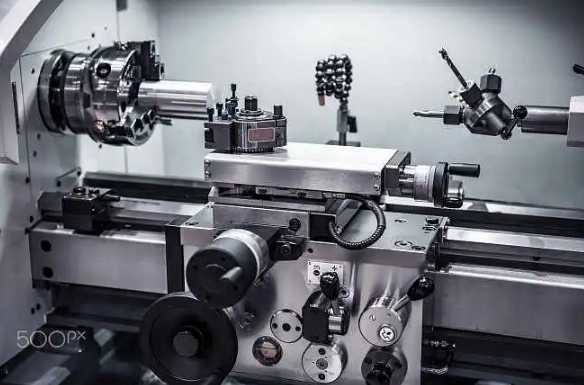
Greater Tool Access and Flexibility
The introduction of 5-Axis CNC machining into modern manufacturing workflows can hardly be called a step in the evolutionary development of the technology; rather, the advent of the tool has been revolutionary in its implications regarding tool access and flexibility. By eliminating the barriers of traditional machining, which required interaction strictly between three perpendicular planes, this advancement changes the ways in which design and manufacturing are approached in the modern era.
Expanded Design Possibilities
By enabling movement along five axes, 5-Axis CNC machining provides a previously unseen level of freedom with regard to the positioning of the tool relative to the workpiece. As such world could be effectively approached from nearly any angle, the attainment of virtually any imaginable geometry becomes possible. The volumes and depths that can be reached may seem otherworldly and entirely unattainable by 3-Axis machines: in the medical device industry, the scale of complexity required for a product such as an orthopedic implant is typified by unimaginable shapes with surface finishes and geometries impossible to achieve otherwise . However, with 5-Axis machining, medical device manufacturers can now complete this product’s complex geometry in a single setup, maintaining tight .0001 inch (.00254 mm) tolerances. It is also essential that the tool can reach any point on the workpiece effectively and in one go, avoiding the need to reposition the tool and, by extension, the workpiece, and obviating the necessity to set it up in different ways. These benefits mean that the design possibilities made available by 5-Axis CNC machining are limited only by the engineer’s imagination.
Overcoming Geometric Constraints
Moreover, the geometric constraints that limited manufacturing possibilities in the past have ceased to exist with the introduction of 5-Axis CNC machining. When work was conducted in 3 Axes prior, complex features on a workpiece required multiple setups to be cut, with each setup bringing with it opportunities for inaccuracies and flaws produced by inconsistent positioning . With the capabilities enabled by 5 Axes, however, the amount of configuration necessary to cut most or all of the part geometry is vastly reduced. Aerospace can serve as an example of an industry that benefits from the complexity enabled by this technology, as airfoil components used to provide the necessary aerodynamic lift for airplanes can now be machined with reduced production times of up to 50% without compromising quality or needing finishing . Thus, the implications of 5-Axis CNC machining are far-reaching in the changed circumstances not just for the manufacturing process but for the product itself. Essentially, the advancement in technology makes possible the creation of objects that could not be made before, even had they been thought of.



